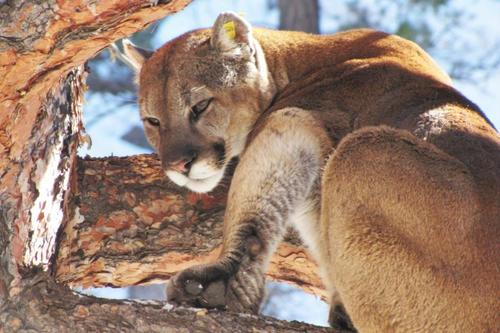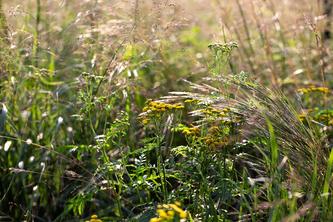
Pumas are famously solitary creatures. They typically avoid contact with humans, which makes them a challenge to observe. As a result, very little is known about their movements and even less about how diseases move through puma populations. A new study in Nature Ecology and Evolution offers rare insight into the pathway of a common virus in pumas and the impact of different wildlife management strategies.
The study, led by Meggan Craft, a professor in the University of Minnesota’s College of Biological Sciences, and Nick Fountain-Jones, disease ecologist at the University of Tasmania who previously worked in Craft’s lab, traced the transmission of feline immunodeficiency virus using DNA to identify patterns of evolution across puma viral genomes.
The researchers partnered with colleagues at Colorado State University and Colorado Parks and Wildlife over a 10-year period to gather puma DNA samples in two comparable regions of the state and to sequence the virus. In one region, hunting was banned for five years and then reinstated. In the other region, hunting was less commonly practiced.
The team found disease transmission dynamics changed markedly in the region where hunting was banned and then reinstated. Less hunting led to higher levels of disease transmission and occurred primarily among males. Since hunters tend to target males, there were more males present during the no-hunting period, which potentially increased competition for territory, a higher likelihood of male-to-male contact and disease spread.
“We had a unique opportunity to test what happens when a population is changed by hunting,” says Craft, who studies the spread of diseases in animal populations. “Our approach enabled us to provide insights into the cascading consequences of hunting and the cessation of hunting on host-pathogen dynamics.”
Craft is known internationally for her work in disease modeling in ecological systems and disease transmission in wild and domestic felids — members of the cat family. Her laboratory uses empirical data generated by collaborators to model disease transmission that is widely applicable across other wildlife disease systems.
The SARS-CoV-2 virus — which has now spread from humans to wild and domestic species such as white-tailed deer, mink, and domestic and non-domestic felids — and the ongoing COVID-19 pandemic further illustrate the importance of this work. “The key lesson from our research is that whenever species management changes, enhanced disease surveillance is a smart idea as there can be unintended consequences for virus evolution and spread,” says Fountain-Jones.
Future studies will further analyze puma behavior and movements to better understand the circumstances in which the disease is transmitted in different ecosystems.
About the College of Biological Sciences
The College of Biological Sciences at the University of Minnesota is one of two colleges in the United States dedicated to the biological sciences with undergraduate majors and graduate programs that cover the spectrum of life from molecules to ecosystems. Learn more at cbs.umn.edu.
- Categories:
- Agriculture and Environment
- Animals





